- Home
- Robert J. Sawyer
Neanderthal Parallax 3 - Hybrids
Neanderthal Parallax 3 - Hybrids Read online
Books by Robert J. Sawyer
NOVELS
Golden Fleece*
End of an Era*
The Terminal Experiment
Starplex
Frameshift*
Illegal Alien
Factoring Humanity*
Flashforward *
Calculating God *
THE NEANDERTHAL PARALLAX
Hominids *
Humans *
Hybrids *
THE QUINTAGLIO ASCENSION
Far-Seer*
Fossil Hunter*
Foreigner *
SHORT-STORY COLLECTION
Iterations
ANTHOLOGIES
Tesseracts 6 (with Carolyn Clink)
Crossing the Line (with David Skene-Melvin)
Over the Edge (with Peter Sellers)
*Published by Tor Books
(Readers’ group guides available at www.sfwriter.com)
www.ebookyes.com
This is a work of fiction. All of the characters and events portrayed in this novel are either fictitious or are used fictitiously.
HYBRIDS
Copyright © 2003 by Robert J. Sawyer
All rights reserved, including the right to reproduce this book, or portions thereof, in any form.
Edited by David G. Hartwell
A Tor Book
Published by Tom Doherty Associates, LLC
175 Fifth Avenue
New York, NY 10010
www.tor.com
Tor®is a registered trademark of Tom Doherty Associates, LLC.
ISBN 0-312-71115-8
First Edition: September 2003
For
Lloyd and Yvonne Penney
Wonderful Human Beings
Contents
Author’s Disclaimer
Acknowledgments and References
Interuniversal Who’s Who
Chapter One
Chapter Two
Chapter Three
Chapter Four
Chapter Five
Chapter Six
Chapter Seven
Chapter Eight
Chapter Nine
Chapter Ten
Chapter Eleven
Chapter Twelve
Chapter Thirteen
Chapter Fourteen
Chapter Fifteen
Chapter Sixteen
Chapter Seventeen
Chapter Eighteen
Chapter Nineteen
Chapter Twenty
Chapter Twenty-one
Chapter Twenty-two
Chapter Twenty-three
Chapter Twenty-four
Chapter Twenty-five
Chapter Twenty-six
Chapter Twenty-seven
Chapter Twenty-eight
Chapter Twenty-nine
Chapter Thirty
Chapter Thirty-one
Chapter Thirty-two
Chapter Thirty-three
Chapter Thirty-four
Chapter Thirty-five
Chapter Thirty-six
Chapter Thirty-seven
Chapter Thirty-eight
Chapter Thirty-nine
Chapter Forty
Chapter Forty-one
Chapter Forty-two
Chapter Forty-three
Chapter Forty-four
Epilogue
About the Author
Author’s Disclaimer
The Sudbury Neutrino Observatory, Inco’s Creighton Mine, Laurentian University (including its Neuroscience Research Group), and York University all really exist. However, all the characters in this novel are entirely the product of my imagination. They are not meant to bear any resemblance to the actual people who hold or have held positions with these or any other organizations.
Acknowledgments and References
For anthropological and paleontological advice, I thank Michael K. Brett-Surman, Ph.D., and Rick Potts, Ph.D., both of the National Museum of natural History, Smithsonian Institution; Philip Lieberman, Ph.D., Brown University; Robin Ridington, Ph.D., Professor Emeritus, University of British Columbia; Gary J. Sawyer [no relation] and Ian Tattersall, Ph.D., both of the American Museum of natural History; Milford H. Wolpoff, Ph.D., University of Michigan, and the various experts listed in the Acknowledgments to my earlier book, Hominids
For advice on genetics and disease, I thank George R. Carmody, Ph.D., Department of biology, Carleton University; Peter Halasz; Hassan Masum, a Ph.D. candidate at Carleton; Alison Sinclair, Ph.D.; and Edward Willett. For advice on the other medical matter that figures in the plot, I thank endocrinologist Christopher Kovacs, M.D., Health Sciences Centre, Memorial University of Newfoundland.
For information about and access to the Sudbury Neutrino Observatory, I thank Art McDonald, Ph.D., and J. Duncan Hepburn, Ph.D.
For drawing to my attention theories that human consciousness is an electromagnetic phenomenon, I thank Norm Nason. Two such theories, similar in most particulars, have recently and independently been developed by Johnjoe McFadden, Ph.D., School of biomedical and Life Science, University of Surrey, and Susan Pockett, Ph.D., Department of physics, University of Auckland. For those interested in reading more about them, McFadden presents a general account of his version in the closing chapter of his book Quantum Evolution: The New Science of Life (HarperCollins UK, 2000; W. W. Norton USA, 2001), and Pockett devotes her entire book The Nature of Consciousness: A Hypothesis (Writers Club Press, 2000) to her version of this theory.
There was much discussion in Humans , the previous book in this trilogy, about paleomagnetic evidence showing that Earth’s magnetic field has previously collapsed very rapidly. Since that research figures again in this book, I invite the curious to check the original study by Robert S. Coe and Michel Prévot, “Evidence suggesting extremely rapid field variation during a geomagnetic reversal,” in Earth and Planetary Science Letters , 92:292–98 (1989), and the follow-up by Coe, Prévot, and Pierre Camps, “New evidence for extraordinarily rapid change of the geomagnetic field during a reversal” in Nature , 374:687–92 (1995). For other advice related to magnetic reversals, I thank Grant C. McCormick and Ariel Reich, Ph.D.
Huge thanks to my lovely wife, Carolyn Clink; my editor David G. Hartwell and his associate Moshe Feder; my agent Ralph Vicinanza and his associates Christopher Lotts and Vince Gerardis; Tom Doherty, Linda Quinton, Jennifer Marcus, Jenifer Hunt, Irene Gallo, and everyone else at Tor Books; and Harold and Sylvia Fenn, Robert Howard, Heidi Winter, Melissa Cameron, David Leonard, Steve St. Amant, and everyone else at H. B. Fenn and Company.
Many thanks, also, to the friends and colleagues who let me bounce ideas off them or otherwise provided input, including Linda Carson, Marcel Gagné, James Alan Gardner, Al Katerinsky, Herb Kauderer, and Robert Charles Wilson. Beta testers for this novel were Ted Bleaney, Carolyn Clink, David Livingstone Clink, Richard Gotlib, Peter Halasz, Howard Miller, Ariel Reich, Alan B. Sawyer, Sally Tomasevic, Edo van Belkom, and David Widdicombe.
Interuniversal Who’s Who
BARASTS (Homo neanderthalensis)
Ponter Boddit
quantum physicist (generation 145)
Jasmel Ket
Ponter’s elder daughter (147)
Mega Bek
Ponter’s younger daughter (148)
Adikor Huld
quantum physicist (145)
Lurt Fradlo
Adikor’s woman-mate, a chemist (145)
Dab Lunday
Adikor’s son (148)
Bandra Tolgak
geologist (144)
Harb
Bandra’s man-mate (144)
Hapnar
Bandra’s elder daughter (146)
Dranna
Bandr
a’s younger daughter (147)
Vissan Lennet
geneticist (144)
Lonwis Trob
inventor (138)
GLIKSINS (Homo sapiens)
Mary Vaughan
geneticist, the Synergy Group
Colm O’Casey
Mary’s estranged husband
Jock Krieger
director of the Synergy Group
Louise Benoît
physicist, the Synergy Group
Reuben Montego
Inco mine-site physician
Veronica Shannon
neurobiologist, Laurentian University
Qaiser Remtulla
geneticist, York University
Cornelius Ruskin
geneticist, York University
The belief in God has often been advanced as not only the greatest, but the most complete of all the distinctions between man and the lower animals.
—CHARLES DARWIN
The Descent of Man
And let me tell you, God is not so infinite as the Catholics assert. He is about six hundred meters in diameter, and even then is weak towards the edges.
—KAREL CAPEK
The Absolute at Large
Mankind was still divided into two species: The few who had “speculation” in their souls, and the many who had none, with a belt of hybrids in the middle.
—JOHN GALSWORTHY
To Let
Chapter One
“ My fellow Americans—and all other human beings on this version of Earth—it gives me great pleasure to address you this evening, my first major speech as your new president. I wish to talk about the future of our kind of hominid, of the species known as Homo sapiens: people of wisdom…”
“Mare,” said Ponter Boddit, “it is my honor to introduce you to Lonwis Trob.”
Mary was used to thinking of Neanderthals as robust—“Squat Schwarzeneggers” was the phrase the Toronto Star had coined, referring to their short stature and massive musculature. So it was quite a shock to behold Lonwis Trob, especially since he was now standing next to Ponter Boddit.
Ponter was a member of what the Neanderthals called “generation 145,” meaning he was thirty-eight years old. He stood about five-eight, making him on the tall side for a male of his kind, and he had muscles most bodybuilders would envy.
But Lonwis Trob was one of the very few surviving members of generation 138, and that made him a staggering one hundred and eight years old. He was scrawny, although still broad-shouldered. All Neanderthals had light skin—they were a northern-adapted people—but Lonwis’s was virtually transparent, as was what little body hair he had. And although his head showed all the standard Neanderthal traits—low forehead; doubly arched browridge; massive nose; square, chinless jaw—it was completely devoid of hair. Ponter, by comparison, had lots of blond hair (parted in the center, like most Neanderthals) and a full blond beard.
Still, the eyes were the most arresting features of the two Neanderthals now facing Mary Vaughan. Ponter’s irises were golden; Mary had found she could stare into them endlessly. And Lonwis’s irises were segmented , mechanical: his eyeballs were polished spheres of blue metal, with a blue-green glow emanating from behind the central lenses.
“Healthy day, Scholar Trob,” said Mary. She didn’t take his hand; that wasn’t a Neanderthal custom. “It’s an honor to meet you.”
“No doubt it is,” said Lonwis. Of course, he was speaking in the Neanderthal tongue—there was only one, so the language had no name—but his Companion implant was translating what he said, pumping synthesized English words out of its external speaker.
And what a Companion it was! Mary knew that Lonwis Trob had invented this technology when he was a young man, back in the year Mary’s people had known as 1923. In honor of all that the Companions had done for the Neanderthals, Lonwis had been presented with one that had a solid-gold faceplate. It was installed on the inside of his left forearm; there were few Neanderthal southpaws. In contrast, Ponter’s Companion, named Hak, had a plain steel faceplate; it looked positively chintzy in comparison.
“Mare is a geneticist,” said Ponter. “She is the one who proved during my first visit to this version of Earth that I was genetically what they call a Neanderthal.” He reached over and took Mary’s small hand in his own, massive, shortfingered one. “More than that, though, she is the woman I love. We intend to bond shortly.”
Lonwis’s mechanical eyes fell on Mary, their expression impossible to read. Mary found herself turning to look out the window of her office, here on the second floor of the old mansion that housed Synergy Group headquarters in Rochester, New York. The gray bulk of Lake Ontario spread to the horizon. “Well,” said Lonwis, or at least that was how his gold Companion translated the sharp syllable he uttered. But then his tone lightened and his gaze shifted to Ponter. “And I thought I was doing a lot for cross-cultural contact.”
Lonwis was one of ten highly distinguished Neanderthals—great scientists, gifted artists—who had marched through the portal from their world to this one, preventing the Neanderthal government from severing the link between the two realities.
“I want to thank you for that,” said Mary. “We all do—all of us here at Synergy. To come to an alien world—”
“Was the last thing I thought I would be doing at my age,” said Lonwis. “But those short-headed fools on the High Gray Council!” He shook his ancient head in disgust.
“Scholar Trob is going to work with Lou,” said Ponter, “on seeing if a quantum computer, like the one Adikor and I built, can be made using equipment that exists—how do you phrase it?—‘off the shelf’ here.”
“Lou” was Dr. Louise Benoît, by training a particle physicist; Neanderthals couldn’t pronounce the long ee phoneme, although their Companions supplied it as necessary when translating Neanderthal words into English.
Louise had saved Ponter’s life when he’d first arrived here, months ago, accidentally transferred from his own subterranean quantum-computing chamber into the corresponding location on this version of Earth—which happened to be smack-dab in the middle of the heavy-water containment sphere at the Sudbury Neutrino Observatory, where Louise had then been working.
Because she’d been quarantined with Ponter and Mary, as well as physician Reuben Montego, when Ponter had fallen sick during his initial visit, Louise had had a chance to learn all about Neanderthal quantum computing from Ponter, making her the natural choice to head the replication effort here. And that effort was a high priority, since sufficiently large quantum computers were the key to bridging between universes.
“And when will I get to meet Scholar Benoît?” asked Lonwis.
“Right now,” said an accented female voice. Mary turned. Louise Benoît—beautiful, brunette, twenty-eight, all legs and white teeth and perfect curves—was standing in the doorway. “Sorry to be late. Traffic was murder.”
Lonwis tipped his ancient head, obviously listening to his Companion’s translation of those last three words, but, just as obviously, completely baffled by them.
Louise came into the room, and she did extend her pale hand. “Hello, Scholar Trob!” she said. “It’s a pleasure to meet you.”
Ponter leaned close to Lonwis and whispered something to him. Lonwis’s brow undulated—it was a weird sight when a Neanderthal who still had eyebrow hair did it; it was downright surreal, Mary thought, when this centenarian did it. But he reached out and took Louise’s hand, grasping it as though he were picking up a distasteful object.
Louise smiled that radiant smile of hers, although it seemed to have no effect on Lonwis. “This is a real honor,” she said. She looked at Mary. “I haven’t been this excited since I met Hawking!” Stephen Hawking had taken a tour of the Sudbury Neutrino Observatory—quite the logistics exercise, given that the detector chamber was located two kilometers underground, and 1.2 kilometers horizontally along a mining drift from the nearest elevator.
“My time is extremely valuable
,” said Lonwis. “Can we get to work?”
“Of course,” said Louise, still smiling. “Our lab is down the hall.”
Louise started walking, and Lonwis followed. Ponter moved close to Mary and gave her face an affectionate lick, but Lonwis spoke up without looking back. “Come along, Boddit.”
Ponter smiled ruefully at Mary, gave a what-can-you-do shrug of his massive shoulders, and followed Louise and the great inventor, closing the heavy, dark wooden door behind himself.
Mary walked over to her desk and started sorting the mess of papers on it. She used to be—what? Nervous? Jealous? She wasn’t sure, but certainly it had originally made her uneasy when Ponter spent time with Louise Benoît. After all, as Mary had discovered, the male Homo sapiens here at Synergy often referred to Louise behind her back as “LL.” Mary had finally asked Frank, one of the imaging guys, what that meant. He’d been embarrassed, but had ultimately revealed it stood for “Luscious Louise.” And Mary had to admit Louise was just that.
But it no longer bothered Mary when Ponter was with Louise. After all, it was Mary, not the French-Canadian, that the Neanderthal loved, and big boobs and full lips didn’t seem to be high on the Barast list of favored traits.

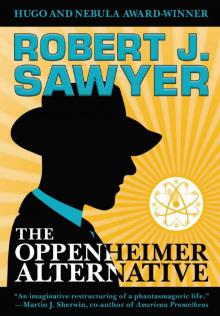 The Oppenheimer Alternative
The Oppenheimer Alternative Factoring Humanity
Factoring Humanity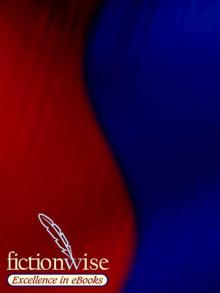 The Shoulders of Giants
The Shoulders of Giants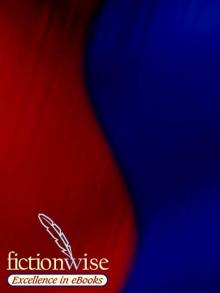 Stream of Consciousness
Stream of Consciousness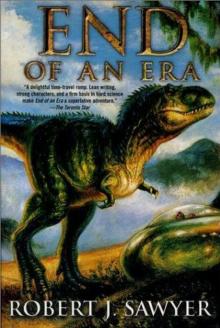 End of an Era
End of an Era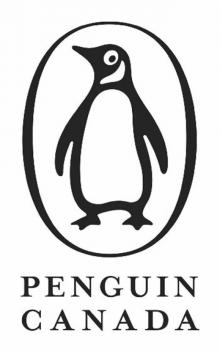 The Terminal Experiment
The Terminal Experiment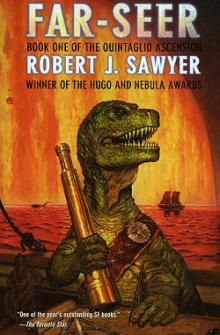 Far-Seer
Far-Seer Mindscan
Mindscan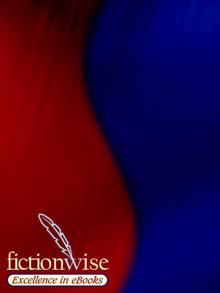 You See But You Do Not Observe
You See But You Do Not Observe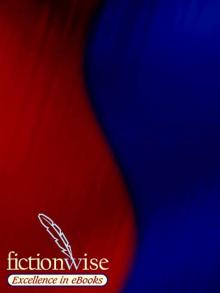 Star Light, Star Bright
Star Light, Star Bright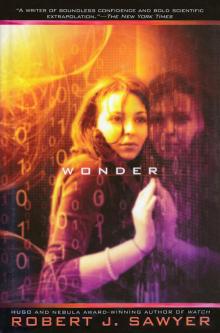 Wonder
Wonder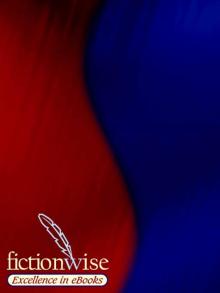 Wiping Out
Wiping Out Flashforward
Flashforward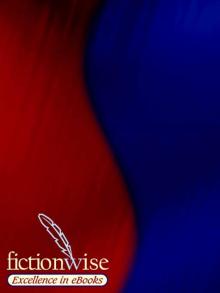 Above It All
Above It All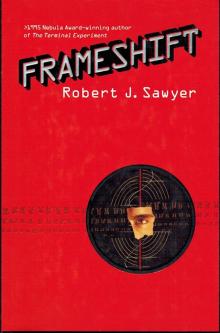 Frameshift
Frameshift The Neanderthal Parallax, Book One - Hominids
The Neanderthal Parallax, Book One - Hominids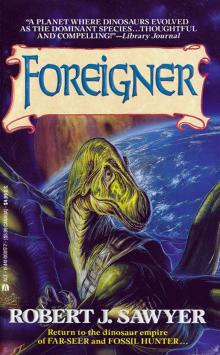 Foreigner
Foreigner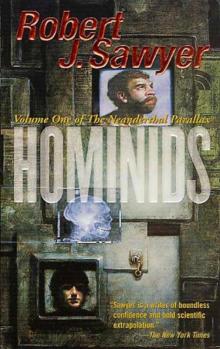 Neanderthal Parallax 1 - Hominids
Neanderthal Parallax 1 - Hominids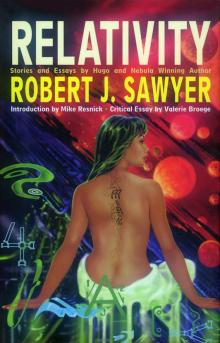 Relativity
Relativity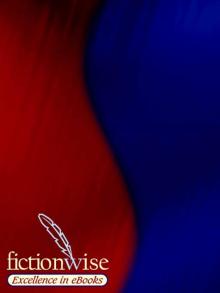 Identity Theft
Identity Theft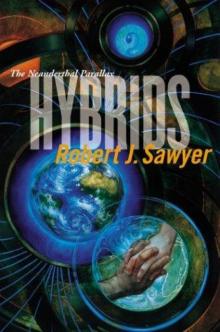 Hybrids np-3
Hybrids np-3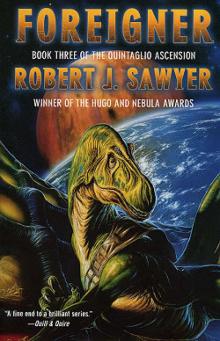 Foreigner qa-3
Foreigner qa-3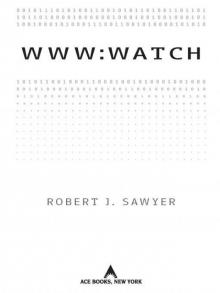 WWW: Watch
WWW: Watch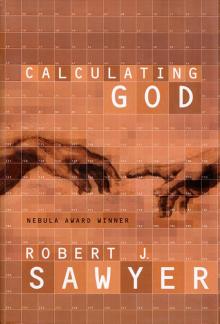 Calculating God
Calculating God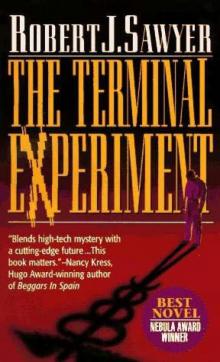 The Terminal Experiment (v5)
The Terminal Experiment (v5)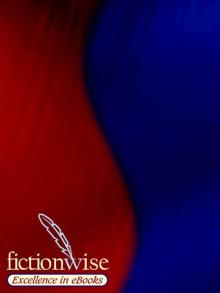 Peking Man
Peking Man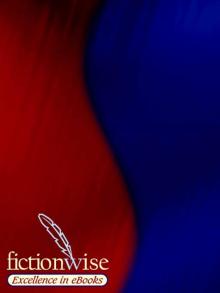 The Hand You're Dealt
The Hand You're Dealt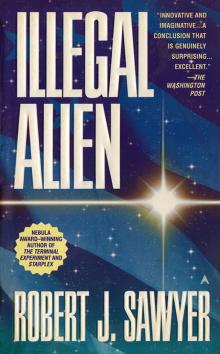 Illegal Alien
Illegal Alien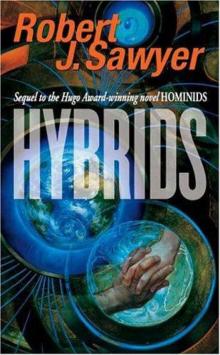 Neanderthal Parallax 3 - Hybrids
Neanderthal Parallax 3 - Hybrids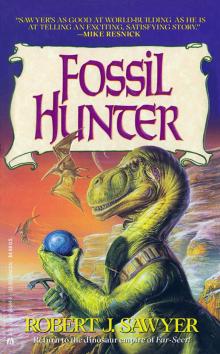 Fossil Hunter
Fossil Hunter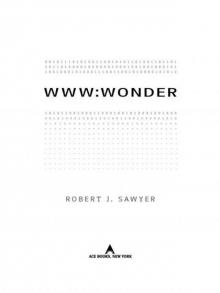 WWW: Wonder
WWW: Wonder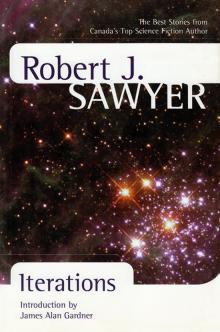 Iterations
Iterations Red Planet Blues
Red Planet Blues Rollback
Rollback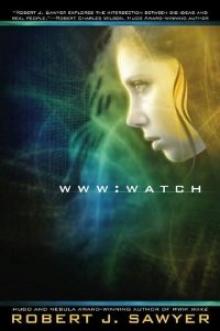 Watch w-2
Watch w-2 Gator
Gator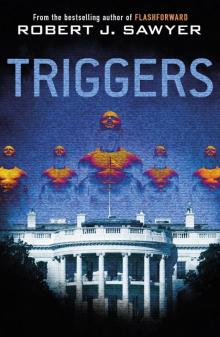 Triggers
Triggers Neanderthal Parallax 2 - Humans
Neanderthal Parallax 2 - Humans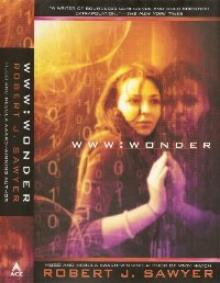 Wonder w-3
Wonder w-3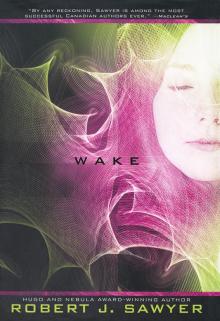 Wake
Wake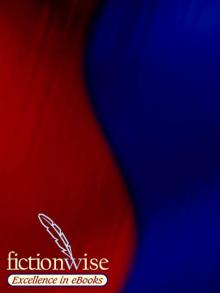 Just Like Old Times
Just Like Old Times Wake w-1
Wake w-1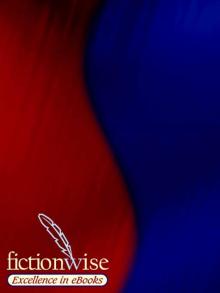 Fallen Angel
Fallen Angel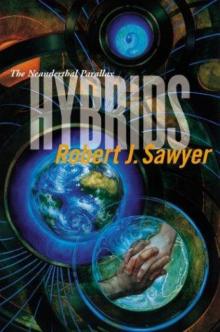 Hybrids
Hybrids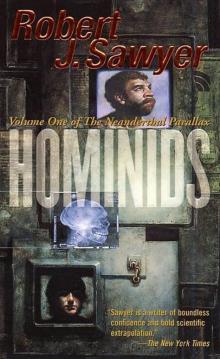 Hominids tnp-1
Hominids tnp-1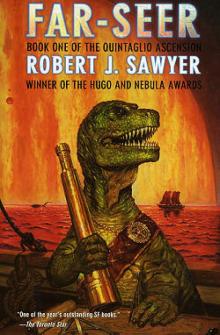 Far-Seer qa-1
Far-Seer qa-1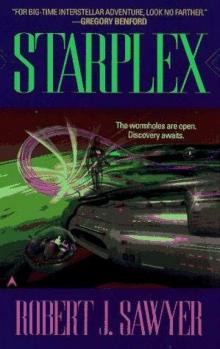 Starplex
Starplex Hominids
Hominids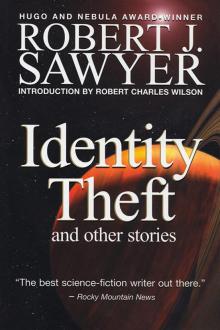 Identity Theft and Other Stories
Identity Theft and Other Stories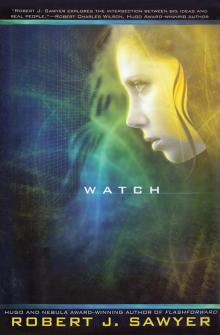 Watch
Watch Golden Fleece
Golden Fleece Quantum Night
Quantum Night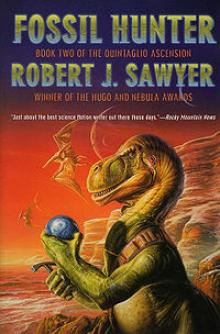 Fossil Hunter qa-2
Fossil Hunter qa-2 Humans np-2
Humans np-2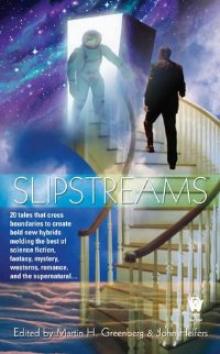 Biding Time
Biding Time